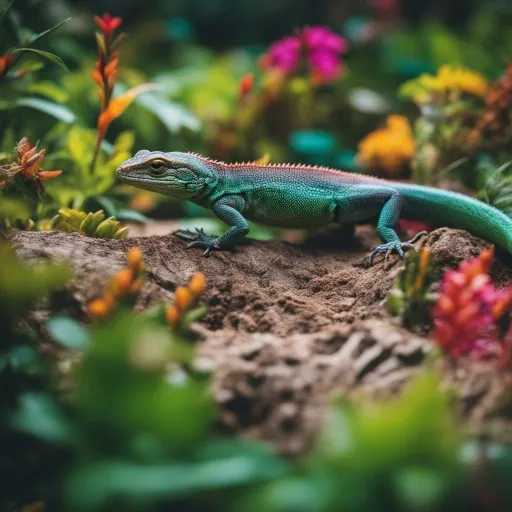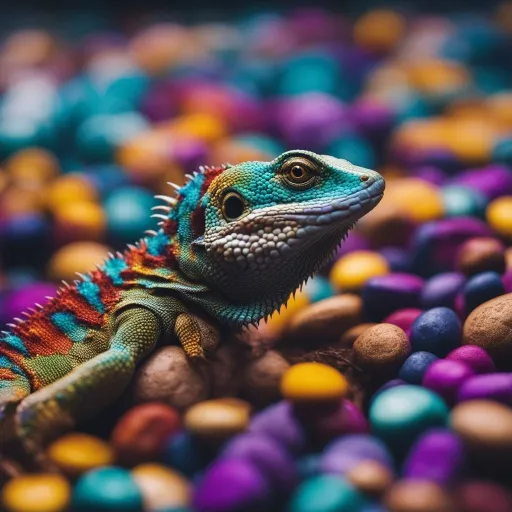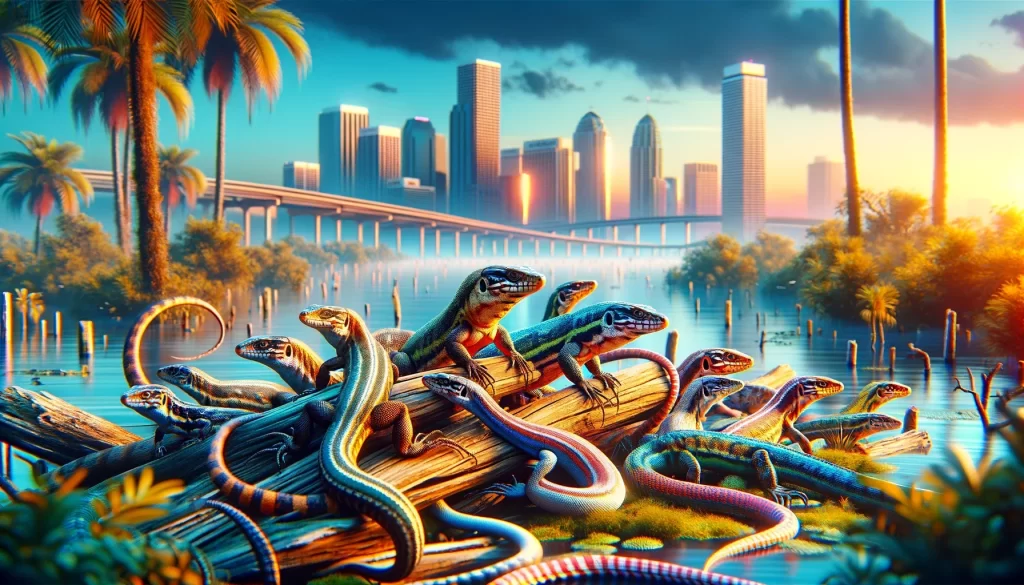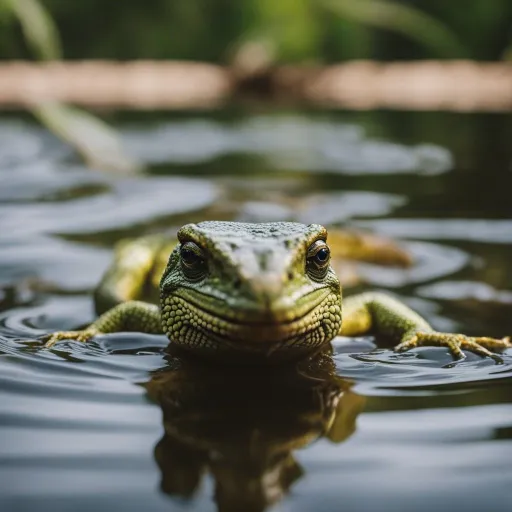
Alright, so you’ve probably wondered at some point whether lizards can see color. After all, these scaly creatures have always fascinated us with their unique abilities.
Well, the answer might surprise you. Turns out, lizards do have some ability to perceive colors, but it’s not quite the same as our human vision.
In this article, we’ll unravel the fascinating world of lizard vision, exploring how they perceive colors and what it means for their daily lives.
Get ready to discover the hidden spectrum of colors that exists in the lizard kingdom!
Can Lizards See Color

Introduction
When you think of lizards, you might imagine their scaly bodies and their ability to blend into their surroundings.
But have you ever wondered if these creatures can perceive colors? Many people assume that lizards see the world in black and white, but the truth is, their visual system is more complex than we think.
In this article, we will explore the fascinating world of lizard vision, diving into the anatomy of their visual system, their ability to perceive colors, and how it compares to human color vision.
The Visual System of Lizards
To understand how lizards perceive color, it’s important to first understand the basics of their visual system.
Like other reptiles, lizards have well-developed eyes that allow them to navigate their environment and locate their prey.
Lizards possess binocular vision, meaning their eyes work together to create a single, three-dimensional image of their surroundings.
This gives them depth perception, which helps them accurately judge distances when hunting or avoiding predators.
Types of Color Receptors
In order to see colors, animals rely on specialized cells called photoreceptors. Humans have three types of photoreceptors, known as cones, which are responsible for color vision. But what about lizards? Recent research has revealed that most lizards also have three types of cones, just like humans. These cones are sensitive to different wavelengths of light, allowing lizards to distinguish between different colors. However, the specific colors that lizards can perceive may vary depending on the species.
Color Perception Tests on Lizards
To determine the extent of color vision in lizards, scientists have conducted various experiments. One common method is to train lizards to associate different colored stimuli with rewards or punishments. By observing their response to these stimuli, researchers can gauge the lizards’ ability to perceive and differentiate between colors. These tests have shown that lizards, at least some species, can indeed see and respond to different colors.

Behavioral Responses to Different Colors
The ability to perceive colors is not only a matter of curiosity but also plays a crucial role in the behavior and survival of lizards. Various studies have investigated how lizards respond to different colors, and the findings are intriguing. For example, some research has shown that lizards may exhibit a preference for certain colors when seeking shelter or engaging in territorial behavior. Additionally, certain colors have been found to influence the feeding behavior of lizards, highlighting the importance of color perception in their daily lives.
Role of Color in Communication and Mating
Color perception in lizards goes beyond mere survival; it also plays a key role in communication and mating. Many lizard species engage in elaborate courtship displays that involve vibrant colors and patterns. These displays serve as visual signals to attract potential mates and establish dominance within a population. The ability to see and interpret these signals accurately is crucial for successful reproduction and maintaining healthy populations of lizards.
Color Vision in Different Species of Lizard
While it is established that many lizard species can perceive colors, the specific range of colors they see can vary across species. Some lizards are more sensitive to certain colors, while others may have a broader range of color vision. For example, certain lizard species may have a preference for colors in the ultraviolet range, which is invisible to human eyes. These variations in color vision reflect the specific ecological niches and evolutionary adaptations of different lizard species.
Comparison with Human Color Vision

Now that we understand more about lizard color vision, how does it compare to our own? As mentioned earlier, both humans and lizards possess three types of cones, suggesting that our color perception mechanisms are similar.
However, there are also some differences. Humans are known for their excellent color discrimination abilities, whereas lizards may not perceive colors as vividly as we do.
Furthermore, certain colors that appear distinct to us may appear more subtle to lizards. These differences in color vision highlight the unique ways in which different species perceive the world around them.
Factors Affecting Lizards’ Color Vision

It is essential to acknowledge that various factors influence how lizards perceive color. For instance, the lighting conditions in their natural habitat can impact their ability to see and differentiate colors accurately.
The availability of different light wavelengths, such as ultraviolet light, may also play a role in shaping their color perception.
Additionally, color vision may differ between diurnal and nocturnal lizard species, as their visual systems adapt to their respective lifestyles.
Further research is needed to fully understand these factors and their implications on lizard color vision.
Final Thoughts
In conclusion, lizards are not colorblind creatures. They possess a visual system that allows them to see and perceive colors, although their color vision may differ from that of humans.
The ability to perceive colors plays a vital role in various aspects of a lizard’s life, from survival and communication to mating and territorial behavior.
By studying lizard color vision, scientists gain insights into the remarkable diversity of visual systems across the animal kingdom.
Future research on lizard color vision promises to uncover even more about these fascinating creatures and the world they see.



